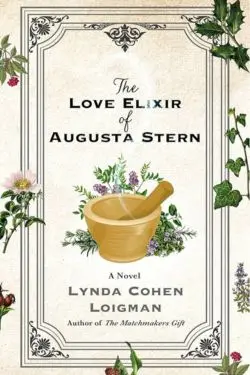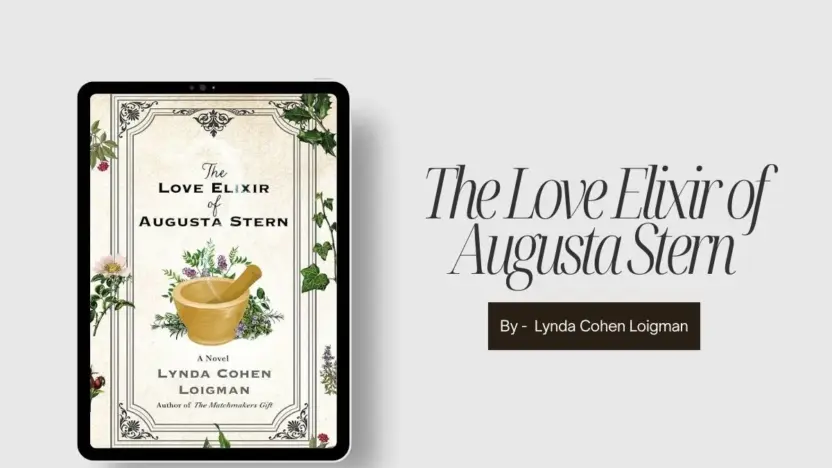“The Love Elixir of Augusta Stern” by Lynda Cohen Loigman is a captivating novel that intertwines themes of love, loss, and second chances across dual timelines. Set in 1920s Brooklyn and 1980s Florida, the story follows Augusta Stern, a woman whose journey from a determined young pharmacist to a reflective octogenarian offers readers a rich tapestry of historical context and emotional depth.
Plot Overview
In the 1920s, young Augusta Stern is inspired by her father, Solomon Stern, a respected pharmacist in Brooklyn. Her aspirations to follow in his footsteps are complicated by the arrival of her Great Aunt Esther, a healer with unconventional methods, and Irving Rivkin, the charming delivery boy who captures her heart. A pivotal event involving one of Esther’s potent elixirs leads to a series of misunderstandings, altering the course of Augusta’s life.
Fast forward to 1987, Augusta, now nearing eighty, relocates to a retirement community in Florida after being compelled to retire from her long-standing career. There, she unexpectedly reunites with Irving, prompting her to confront past regrets and unresolved feelings. The narrative oscillates between these two periods, gradually unveiling the truths behind their separation and exploring the possibility of rekindled love.

Character Development
Augusta Stern emerges as a compelling protagonist, embodying resilience and complexity. Her evolution from a young woman torn between scientific pursuits and familial expectations to an elderly individual grappling with past decisions is portrayed with nuance. Her interactions with Aunt Esther introduce a mystical element, highlighting the tension between traditional medicine and alternative healing practices.
Irving Rivkin’s character serves as both a catalyst for Augusta’s youthful aspirations and a mirror reflecting her later introspection. Their relationship, marked by miscommunication and societal pressures, underscores the novel’s exploration of love’s enduring yet fragile nature.
Themes and Historical Context
The novel delves into the challenges faced by women in the early 20th century, particularly in male-dominated fields like pharmacy. Augusta’s determination to pursue a professional career amidst societal constraints offers insight into the era’s gender dynamics. The inclusion of Aunt Esther’s healing practices introduces themes of cultural heritage and the often-overlooked contributions of women healers.
The 1980s timeline provides a contrasting backdrop, reflecting on aging, retirement, and the quest for personal fulfillment in later life. The setting of a Florida retirement community adds authenticity, capturing the nuances of senior living and the complexities of rekindling past relationships.
Narrative Structure
Loigman’s use of a dual timeline effectively bridges past and present, allowing readers to piece together the narrative puzzle alongside the characters. This structure enhances suspense and emotional engagement, as revelations in one timeline resonate with developments in the other. The gradual unveiling of past events fosters a deeper understanding of the characters’ motivations and regrets.
Critical Reception
The novel has garnered praise for its rich characterizations and seamless blending of historical fiction with elements of magical realism. Reviewers have lauded its portrayal of strong female characters and the authentic depiction of different eras. However, some critiques point to occasional melodramatic moments and a desire for a more in-depth exploration of certain plot points.
Conclusion
“The Love Elixir of Augusta Stern” is a poignant exploration of love’s complexities and the enduring impact of past choices. Through Augusta’s journey, Loigman crafts a narrative that is both heartwarming and thought-provoking, reminding readers that it’s never too late to seek reconciliation and embrace new beginnings. The novel’s rich historical context, coupled with its timeless themes, makes it a compelling read for those interested in stories that traverse time and delve into the human heart.
Also Read: Revenge of the Tipping Point: Overstories, Superspreaders, and the Rise of Social Engineering: By Malcolm Gladwell (Book Review)



